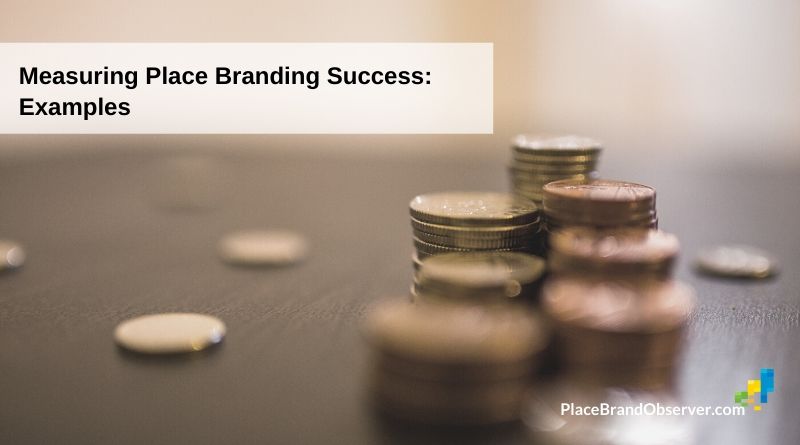Every place branding initiative or place marketing campaign needs to monitor its success or impact, to determine whether it has reached its objectives. Having looked at the why and how of measuring place branding success, as well as the challenges involved, this third post of the series is all about examples: measurement in action.
Again, we turned to our global panel of place branding specialists for advice and below are their responses (in alphabetical order – highlighted respondents are available for consulting, research or as speakers).
Examples include:
- Berlin, the startup city
- Ohio as the top destination in the USA for new capital investment
- Mississauga in Canada
- Stockholm, the “Capital of Scandinavia”
- UK’s GREAT campaign and Brand USA
- Attracting skilled workers to the state of Tasmania (Australia)
- Chengdu as destination promoted during the 2012 London Olympics
Andrew Hoyne
For me, Berlin is a great example of success in measuring place marketing and branding. This is because the city had a set of very clear goals that it wanted to achieve: positioning and promoting Berlin as the place for start-ups. Berlin’s marketing and branding focus on attracting a very specific international audience with a certain mindset.
As a result of having such clear and specific goals and target audience, measuring the impact of Berlin’s place brand and marketing has been measured with relative ease and simplicity – by tracking the number of start-ups that cluster in the capital and the percentage of foreign investment that pours into this sector, which is then absorbed by Berlin.
Christopher Hire
The Koreans have done some interesting work in this area, so have the New Zealanders and the Indonesians.
Ed Burghard
In Ohio, we created and annually fielded a state brand equity monitor and used the results to identify opportunities to improve both Ohio’s brand identity and image. This quantitative research evaluated the perceived importance and performance of Ohio and a cohort of competitive states on a range of rational and emotional criteria used by CEOs to make major capital investment decisions. Statistically, significant differences based on an 80% confidence level was used to define competitive strengths and weaknesses.
As an example, here are four (of roughly thirty) attributes that were found in the research:
- The location will allow me to achieve my professional ambitions
- The location will allow me to achieve my personal ambitions
- The family would feel at home
- Can envision company thriving there
The results of this quantitative research-informed state-level choices in capital investment, infrastructure improvement and public policy/program choices. Over a 5-year period, Ohio led the nation in new capital investment deals (as measured by Site Selection Magazine). Our target audience was CEOs in specific industries of focus.
If I had the opportunity to do it again, I would have designed the quantitative study to gather data from state residents and from non-resident top talent in select industries to guide strategic choices on placemaking. This approach squarely focuses attention on meeting the needs of residents with the belief that doing so will ultimately benefit the business
Jeannette Hanna
Trajectory Brand Consultants / Speaker profile
Creating the equivalent of an integrated brand ‘dashboard’ – like Mississauga in Canada has done – is the most effective strategy I have seen.

Todd Babiak
In Tasmania (Australia) we set a baseline. Let’s say it’s the number of nurses we have attracted to our state in the past two years. Then we launch our place brand and begin working with the agencies that recruit nurses.
We use the brand as communication and as action. We use it to segment our audience. Perhaps we launch a campaign that tells our brand story in a compelling way. We wait a year and we measure it. Did we succeed? If not, we use data and interviews to understand why we didn’t succeed and we try again.
Erling Fossen
Stockholm’s infamous ‘Capital of Scandinavia’ campaign from around 2005 was seen as hugely successful because most of the surrounding municipalities and many of the large Swedish multinational companies headquartered in Stockholm actually adopted both the logo and the slogan.
Hila Oren
Generally speaking – places that have had conflicts or crises and still managed to produce a positive image would be good examples of successful place marketing and branding. These would include Christchurch in New Zealand, thriving despite the earthquake and shootings, New York City after 9/11, Tel Aviv with the wars and military operations.
Hong Fan
My studio once helped the city of Chengdu to measure the success in marketing their city during the 2012 London Olympic Games. The government organized a few marketing events in London including the Panda show in Trafalgar Square. We did some tests including an on-spot interview with spectators to learn about their experience with the Panda show and their association of Chengdu city.
We also did an in-depth analysis of the event’s media coverage in English-speaking newspapers and social media posting on the same day. Also, we checked how many tourism brochures and panda toys (with the name of Chengdu written on their chests) were distributed to spectators on that day. Although the report was a short one, the research on the success of that marketing activity seemed interesting and inspiring.
Jonathan McClory
The UK’s GREAT campaign put a lot of effort and resource behind the measurement. However, it was geared almost exclusively to economic impact and the ROI figures should be taken with a pinch of salt. Still, GREAT’s work in trying to develop these metrics should be commended.
Likewise, Brand USA has done a decent job of working to calculate reliable ROI figures for their efforts, though this is limited to tourism, and thus easier to pin down as a single industry vertical.
Rebecca Smith
I would say the qualitative research and creative testing we do for New Zealand is unique in its breadth and has been very effective in driving a consistent understanding of what’s required among stakeholders. All work across New Zealand Story, Tourism, Education, Investment, and Immigration is insight or data-led. This means we can take a long term approach as well as gain the trust and confidence of both the public and private sectors to support our objectives.
Those countries who have been able to pool all measures across sectors into one dashboard stand apart in being able to command the attention of all stakeholders and corral everyone in the same direction.
Find previous questions answered by the panel here.
You’d like to ask the panel a question? Get in touch!
Enjoyed examples of success measurement for place branding initiatives and place marketing campaigns from around the world? Thanks for sharing!






